- Home
- Clive Cussler
Medusa nf-8 Page 8
Medusa nf-8 Read online
Page 8
A shadow passed near the edge of the searchlight beam and turned toward the bathysphere.
As Zavala pressed his face against a porthole, every hair on his scalp stood up and saluted. He was looking into three glowing eyes, one of them over the other two.
He had little time to analyze his impressions. The sphere jerked again.
“We’re seeing cable oscillations near the surface,” Kurt’s voice came over the speaker. “What’s going on?”
There was another jerking movement.
“There’s something out there,” Zavala said.
“What are you talking about?” Austin asked.
Zavala wasn’t sure himself, so he simply said, “Haul us up.”
“Hang tight,” Austin said. “We’re starting the winch.”
The bathysphere seemed to stabilize. The numbers on the fathometer blinked, showing that the sphere was moving up toward the surface. Kane broke into a relieved grin, but the expression on his face froze as the bathysphere jerked once more. A second later, the men in the B3 were levitating as if plunging on a runaway elevator.
The bathysphere had gone into free fall.
CHAPTER 7
AUSTIN LEANED AGAINST THE SHIP’S RAILING AND SAW THE B3’s tether cable oscillating like a plucked violin string. He spoke into the headset microphone that connected him with the bathysphere. “What’s going on, Joe? The cable is going crazy.”
Austin heard garbled voices, the words inaudible against a background of metallic clanging. Then the cable abruptly stopped its wild gyrations, and the line went dead.
Austin strained his ears. Nothing. Not even a whisper of static. He removed the headset and examined the connections. Everything was in place. He unclipped his belt radio and called the captain in the ship’s bridge.
“I’ve lost voice communication with the B3. Is the video transmission coming through?”
“Not since it was cut off,” the captain reported.
“Have you checked the redundant systems?” Austin asked.
Unlike the original bathysphere, which was connected to the surface with a single telephone line, the B3’s hauling cable incorporated several different communications routes in case one went out in the hostile deep-sea environment.
“Ditto, Kurt, nothing. All systems are out.”
A frown crossed Austin’s tanned face. It made no sense. If one system failed, another system should have taken over. Zavala had bragged that the instrumentation he’d designed for the B3 equaled that of a jetliner.
Austin instructed the crane operator to reel the cable in. As it slithered out of the water and around the drum, the operator’s voice came over Austin’s headset.
“Hey, Kurt, something’s wrong. There’s no weight resistance at the other end. The cable’s coming up too fast and easy. It’s like cranking a spinning reel after you’ve lost your fish.”
Austin asked the crane man to speed up the retrieval of the bathysphere, and the cable slinked from the sea at an even faster rate. The launch crew was pressed against the railing, silently watching the streaming cable. The NUMA film crew, sensing the tension in the air, had stopped filming.
“Almost at the surface,” the crane operator warned. “Heads up!”
The operator slowed the winch, but still the cable snapped like a bullwhip when it came out of the water, the bathysphere no longer attached. He swung the dangling cable over the ship and put the winch in reverse, letting several yards of the cable coil on the deck. Austin went over to the coil and picked up the end of the cable.
A cameraman standing nearby saw Austin holding the free end of the cable. “Damned thing snapped!” he said.
Austin knew that the cable could hold ten times the weight of the B3. He examined it closely. The strands were as even edged as the bristles of a paintbrush. He turned to the NUMA oceanographer who had chosen the dive site.
“Is there any feature down there, a coral ridge or overhang, that could have snagged the cable?” he asked.
“The bottom is as flat as an ironing board,” the oceanographer said, almost insulted at the question. “There’s a carpet of marine growth, but that’s it. Nothing but mud. That’s why we selected this spot. We did intensive bottom profiling before we made our recommendation.”
Watching from the bridge, Captain Gannon had seen Austin examining the cable. He hustled down to the deck, and he swore lustily when Austin showed him the sheared-off end. “What the hell happened?”
Austin shook his head. “I wish I knew.”
“The press boats have been calling in,” the captain said. “They want to know what happened to the video transmission.”
Austin scanned the cordon of encircling boats being kept away from the area by a Coast Guard patrol. “Tell them that there was a problem with the fiber-optic cable. We need time to figure this thing out.”
The captain called the bridge, relayed Austin’s suggestion, and snapped the radio back onto his belt.
“It’s going to be all right, isn’t it, Kurt?” Gannon asked with worry in his eyes. “The B3’s flotation bags will bring them to the surface, right?”
Austin squinted against the glare coming off the surface of the water. “The bathysphere is a long way down; let’s give it a while. But we should ready an ROV in case we need to take a look.”
Despite his apparent serenity, Austin knew that each passing minute diminished the possibility of a flotation-bag ascent. The bathysphere could rely on battery power for light, but its air would eventually peter out. He waited a few more minutes, then called the captain and recommended that they launch the ROV.
The remotely operated vehicle, or ROV, has become the workhorse of undersea exploration. Controlled by means of a tether, an ROV can dive deep, maneuver into the tightest spaces, and transmit television images, allowing the operator to travel to the depths without leaving the dry comfort of the ship.
The captain had chosen a medium-sized vehicle, about the size and shape of an old steamer trunk, that could operate at a depth of six thousand feet. Six thrusters positioned the vehicle with pinpoint accuracy; it was equipped with two manipulators for collecting samples, and several cameras, including high-resolution color video.
A telescoping starboard boom swung the ROV off its cradle and lowered it into the sea. Austin watched it sink under a mound of pale green bubbles, trailing its tether behind it, then stepped into the remote-sensing control center located in a cargo container on the main deck.
The video feed through the ROV’s tether was connected to a console from which the remote’s movement was controlled by a pilot with a joystick. Images from the feed were transmitted to a big screen above the console. The ROV’s heading and speed were displayed in combination letters and numbers at the top of the screen, along with elapsed time.
Moving in a descending spiral, the ROV traveled in minutes the same distance it had taken the bathysphere hours. The remote blasted through schools of fish, scattering them like leaves, as it corkscrewed into the sea.
“Leveling out,” the pilot said.
She put the remote into a shallow-angled dive like an airplane preparing to land. Its twin searchlights picked out brownish green bottom vegetation that looked like leaves of spinach undulating in the current. There was no sign of the Bathysphere 3.
Austin said, “Start searching, in parallel passes, a hundred feet long.”
The ROV cruised about twenty feet over the vegetation. It finished its first hundred-foot pass, then traveled back with fifteen feet separating it from the first pass. The speed indicator showed the ROV was doing five knots.
Austin clenched and unclenched his fists, impatient with the glacially slow pace. Other crew members now gathered around the screen, but no one spoke except for the quick communication between Austin and the ROV pilot. Austin mentally excluded everything in the room, pouring himself into the monitor as if he were riding atop the ROV.
Five more minutes passed.
The ROV’s methodical back-
and-forth movement was similar to that of a lawn mower. The picture transmitted by its electronic eye was the same unchanging monotonous carpet of brownish green.
“Wait,” Austin said. He had seen something. “Go to the left.”
With a jiggle of the joystick, the pilot pivoted the vehicle so that it was perpendicular to its original path. The twin searchlights picked up mud splatter around the rim of a crater. A mud-covered, domelike shape protruded from the center of the crater. Now Austin saw why the B3 hadn’t surfaced; its flotation bags were buried deep in the mud. He asked the pilot to blow mud away from the bathysphere. The ROV’s thrusters kicked up a thick brown cloud that hardly made a dent in the heavy muck.
At Austin’s request, the pilot put the ROV on the bottom and pointed its searchlights at the sphere. Austin stared at the image, plumbing his training and experience.
He was pondering the technical challenge involved in freeing the B3 from the clutches of the sea when a shadow appeared on the right-hand side of the monitor. Something was moving. It was there for an instant, then gone.
“What was that?” the pilot asked.
Before Austin could venture a guess, the screen went blank.
CHAPTER 8
ZAVALA LAY ON HIS SIDE, HIS RIGHT ARM PINNED UNDER his hipbone, his left curled up to his chest. His legs were immobilized by a soft weight. Ignoring the jagged shards of pain stabbing under his ear, he lifted his head and saw Kane stretched belly down across his knees.
In the dim, battery-powered light, Zavala saw that the cabin was littered with papers, ditty bags, clothing, bottles of water, seat cushions, and other loose items. Zavala reached for his headset and held it to his ear. Silence. He tested Kane’s headset. Not even a hint of static.
The loss of communication was ominous, but Zavala’s optimistic nature would not let him dwell on such bad luck. He wiggled one leg, freed his foot, and used it to shove Kane’s body off the other leg. Kane rolled onto his back, and a low groan escaped his lips.
The painful exertion triggered waves of nausea in Zavala. He unclipped the first-aid kit from the wall and broke open an ampoule, waving it under his nostrils. The acrid odor snapped him to alertness.
He removed the good-luck cap. Gingerly probing his scalp with his fingertips, he found a lump that felt as big as an egg. He poured water from a canteen on a compress bandage and held it lightly against his head. Even the slight pressure was painful, but the throbbing eased.
Zavala tucked a seat cushion under Kane’s head. He removed Kane’s skullcap and applied the compress. Kane winced, and his eyes blinked wide open.
“Ow!” he said. A good sign.
Zavala lightened the pressure but kept the compress in place.
“Sorry, Doc, Florence Nightingale couldn’t make it, so you’re stuck with me,” Zavala said. “Try moving your toes and fingers.”
Kane flexed his hand and foot joints, then bent his legs at the knees, grimacing in pain. “Nothing seems broken.”
Zavala helped Kane sit up and handed him the canteen. He waited until Kane had slugged down a couple of gulps, then said, “What do you remember, Doc?”
Kane pursed his lips in thought. “I was looking out the window, broadcasting my observations.” He glanced at his headset.
“Don’t bother,” Zavala said. “The headsets don’t work.”
Kane’s face turned the color of oatmeal. “We’re not connected to the surface?”
“Temporarily . . . Keep talking.”
Kane took a deep breath. “We saw some kind of weird big fish or whale. Next, I remember heading for the moon. Then blotto. What about you?”
Zavala jerked a thumb upward. “Same scenario. I went airborne and slammed against the roof. I put my hand out to soften the blow, but all I got for the effort was a sore arm. Good thing I’ve got a hard head.”
“From the sounds of it, the cable probably slipped on the winch drum.”
Zavala said nothing.
“I don’t get it,” Kane said. “Why haven’t they winched us up by now?” He noticed that the bathysphere was perfectly still, and he seemed to catch his breath. “We’re not moving, Joe. What’s happened to us?”
Zavala wanted to avoid panic, but there was no sugarcoating their situation. “We seem to be sitting on the bottom, Doc.”
Kane looked at the instrument panel and saw that the systems were operating on batteries. “If we were still attached, we’d have power. Oh, hell! The cable must have snapped.”
“That’s almost impossible. And there could be other reasons for the breakdown. We’re talking about maintaining contact over a cable through more than a half mile of ocean. Remember Beebe comparing the bathysphere to a pea on a cobweb? No man-made system is flawless, but this isn’t the Titanic. Even if we were no longer connected to the surface, we’ve got other options.”
Kane brightened. “Duh, of course! Your flotation system.”
Zavala managed a smile. “What do you say we pop up to the Beebe lounge and mix a pitcher of margaritas?”
“What are we waiting for?” Kane was as ebullient as a condemned man given an eleventh-hour reprieve.
Zavala unclipped a nylon bag from the wall and asked Kane to clean up the cabin. Busywork would lift Kane’s spirits as well.
“The compressed-air tanks are in the center of the platform, and they feed into flotation bags that are stuffed into the skids,” Zavala explained. “When the GO switch is activated, doors open in the sides of skids, compressed air fills the bags instantly, and they lift us to the surface, where the ship can snag us.”
Kane rubbed his palms together in anticipation. “Margaritaville, here we come.”
Zavala slid over to the instrument panel. “Funny, isn’t it? We go through all sorts of trouble to get to the bottom of the sea, and, when we finally make it, we want to go home.”
“We can discuss the philosophical implications on the deck of the Beebe,” Kane said. “I’d be happy just to be able to stretch out my legs.”
Zavala turned his attention to a plastic box attached to the wall next to the instrument panel. He unsnapped the box’s cover to reveal a red button emblazoned with an arrow pointing up.
“This is a two-step process,” he explained. “This button arms the system, and that identical button on the control panel activates it. When I say go, you hit the switch, and I’ll do the same with mine. Then hold on. There’s a ten-second delay.”
Kane put his finger to the button Zavala had indicated. “Ready.”
“Go,” Zavala said.
Zavala had tested the escape system in a water tank and prepared himself for a muted bang and a whoosh, but nothing happened at the end of ten seconds. He told Kane to try again. Again, nothing happened. Zavala checked a troubleshooting display that would have indicated a system malfunction but saw nothing amiss.
“Why won’t it work?” Kane asked.
“Something must have gotten banged around when we hit bottom. Don’t worry, I programmed in a backup system.”
Zavala tapped a keypad to reroute the signal and told Kane to try again. Again, there was a failure to inflate. They would have to go with the manual switch. Zavala opened another plastic-covered panel and looped his fingers through a handle attached to a cable. Pulling the cable, he explained, would produce a small electrical current that would trigger the flotation mechanism.
He clenched his teeth and yanked. Nothing happened. He tried several more times, but it was no use. The manual trigger failed to activate.
Kane watched these fruitless attempts with growing apprehension. “What’s wrong?” he asked.
Zavala’s hand dropped from the manual switch. He stared into space, letting his mind’s eye travel through the workings of the flotation system. His gaze wandered to the window.
He flicked the searchlight on and was puzzled when he didn’t see a glimmer. He moved closer to the window. Sliding a flashlight from its wall rack, he pointed the light out the window, cupping his eyes to prevent reflec
tion. The light failed to penetrate the darkness.
He passed the flashlight to Kane. “Take a look.”
Kane peered through the porthole. “Hell, there’s black mud against the windows.”
“We came down hard. There’s nothing wrong with the system. The mud is blocking the flotation doors.”
Kane was silent for a time. When he did speak, it was almost in a whisper. “We’re screwed, aren’t we?”
Zavala reached out and gripped one of Kane’s wrists tightly. “Calm down, Doc,” he said evenly.
Their eyes locked for a second, and Kane said, “Sorry, Joe, your call.”
Zavala loosened his grip. “I don’t mean to sound casual. We’re in a tough spot, yes, but it’s far from hopeless. The folks on the Beebe must know something has happened, and they’ve got our position.”
“What good will that do if the cable is broken? They still have to haul us up somehow.”
“I’m sure Kurt will figure it out.”
Kane snorted. “Austin’s an impressive guy, but he’s not a miracle man.”
Zavala thought about the countless times Austin’s courage and resourcefulness had snatched them back from the edge of disaster.
“I’ve worked with Kurt for years, and he’s as close to a miracle worker as I’ve ever seen. If anyone can get us out of here, he can. We’ve got more than three hours of air and enough power to give us light and heat. Our biggest problems will be boredom and el bano.” He picked up a plastic bag. “This should take care of our sanitary needs. Since we’ve been thrown together by the fates, maybe we should know more about each other. Tell me about your work,” Zavala said.
Kane’s face lit up, and he seemed to forget his claustrophobic surroundings. “My specialty is the phylum Cnidaria, which includes the class commonly known as jellyfish. Many people don’t find jellyfish terribly exciting.”
“I think jellyfish are very exciting,” Zavala said. “I was zapped once by a Portuguese man-of-war. The encounter was extremely painful.”

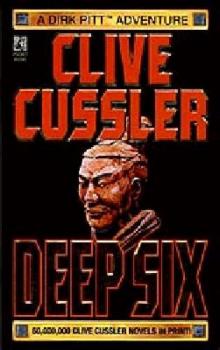 Deep Six
Deep Six Odessa Sea
Odessa Sea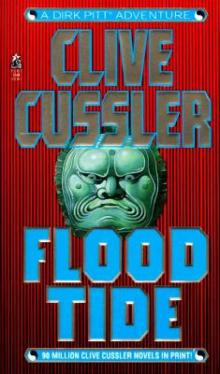 Flood Tide
Flood Tide Valhalla Rising
Valhalla Rising Thriller 2
Thriller 2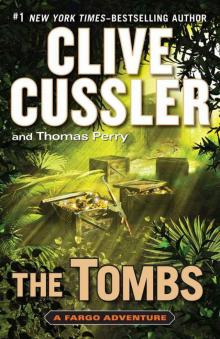 The Tombs
The Tombs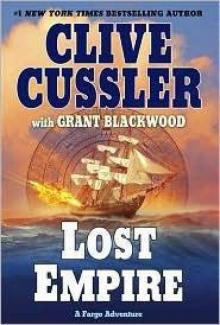 Lost Empire
Lost Empire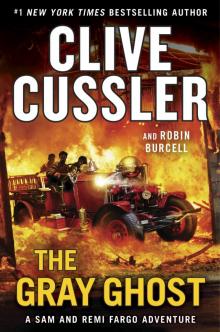 The Gray Ghost
The Gray Ghost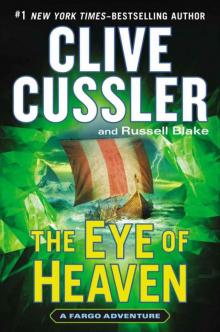 The Eye of Heaven
The Eye of Heaven Polar Shift
Polar Shift The Kingdom
The Kingdom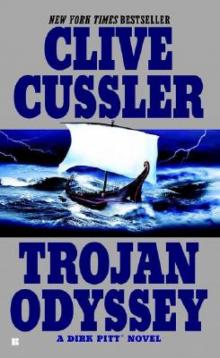 Trojan Odyssey
Trojan Odyssey Shadow Tyrants
Shadow Tyrants Nighthawk
Nighthawk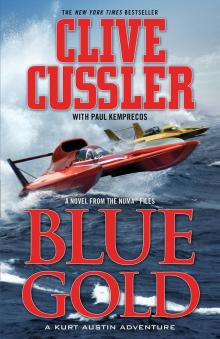 Blue Gold
Blue Gold Serpent
Serpent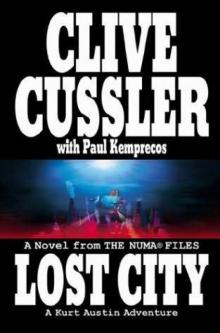 Lost City
Lost City The Gangster
The Gangster White Death
White Death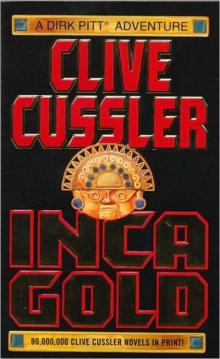 Inca Gold
Inca Gold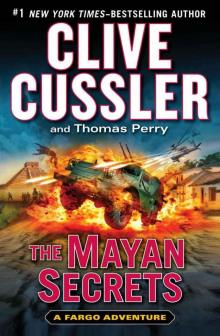 The Mayan Secrets
The Mayan Secrets The Pharaoh's Secret
The Pharaoh's Secret The Emperor's Revenge
The Emperor's Revenge Corsair
Corsair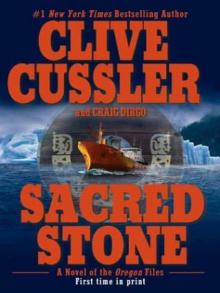 Sacred Stone
Sacred Stone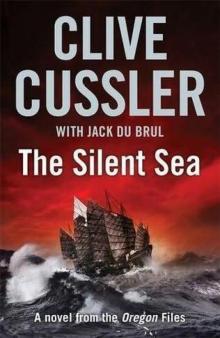 The Silent Sea
The Silent Sea The Rising Sea
The Rising Sea Black Wind
Black Wind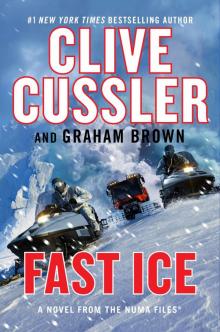 Fast Ice
Fast Ice Ghost Ship
Ghost Ship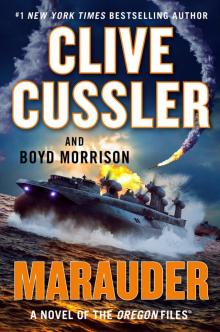 Marauder
Marauder The Thief
The Thief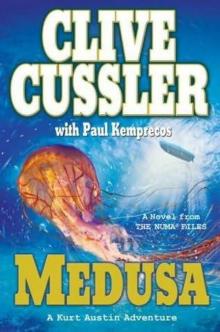 Medusa
Medusa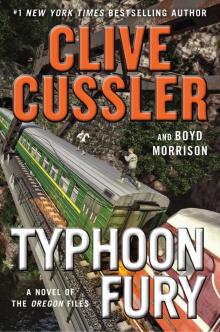 Typhoon Fury
Typhoon Fury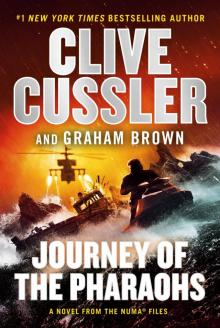 Journey of the Pharaohs
Journey of the Pharaohs The Navigator
The Navigator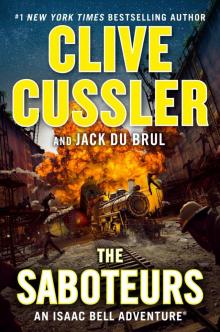 The Saboteurs
The Saboteurs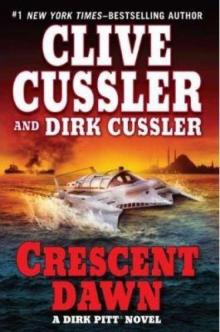 Crescent Dawn
Crescent Dawn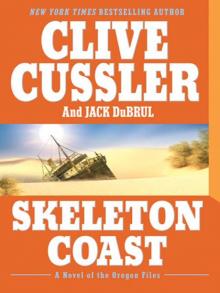 Skeleton Coast
Skeleton Coast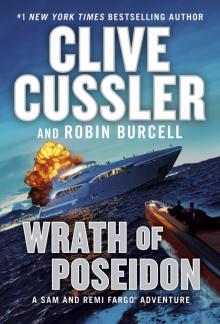 Wrath of Poseidon
Wrath of Poseidon The Mediterranean Caper
The Mediterranean Caper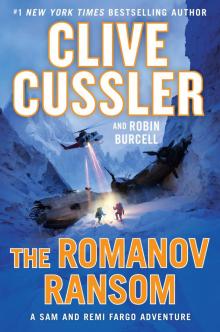 The Romanov Ransom
The Romanov Ransom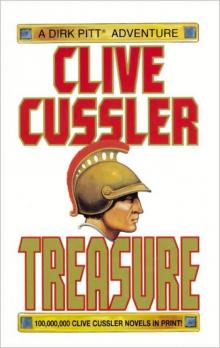 Treasure
Treasure The Race
The Race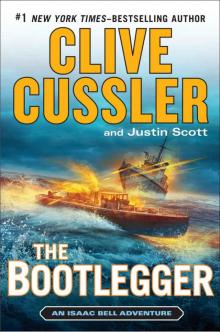 The Bootlegger
The Bootlegger Spartan Gold
Spartan Gold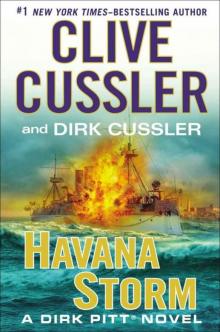 Havana Storm
Havana Storm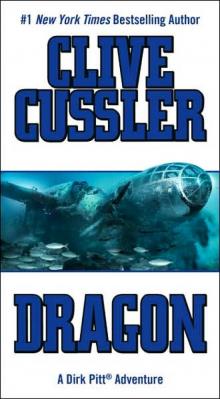 Dragon
Dragon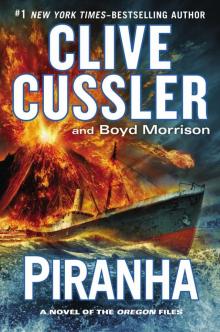 Piranha
Piranha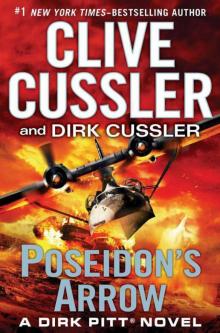 Poseidon's Arrow
Poseidon's Arrow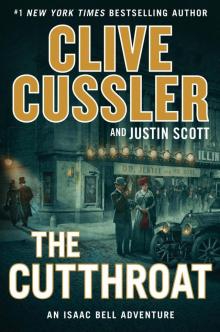 The Cutthroat
The Cutthroat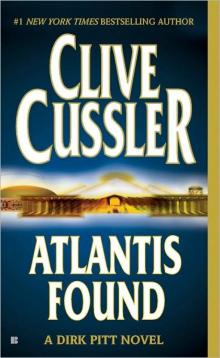 Atlantis Found
Atlantis Found The Jungle
The Jungle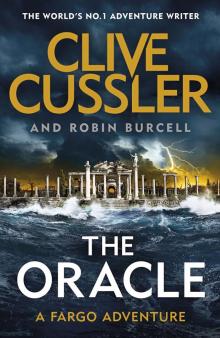 The Oracle
The Oracle Treasure / Dragon / Sahara: Clive Cussler Gift Set
Treasure / Dragon / Sahara: Clive Cussler Gift Set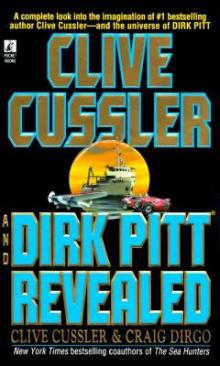 Clive Cussler and Dirk Pitt Revealed
Clive Cussler and Dirk Pitt Revealed The Sea Hunters
The Sea Hunters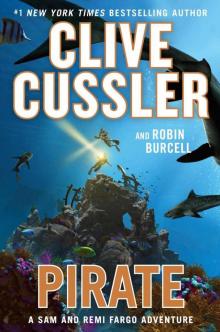 Pirate
Pirate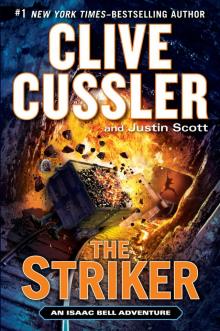 The Striker
The Striker Plague Ship
Plague Ship The Wrecker
The Wrecker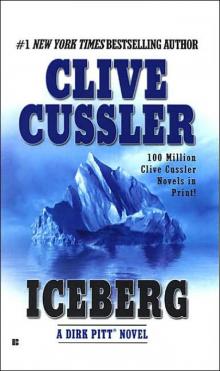 Iceberg
Iceberg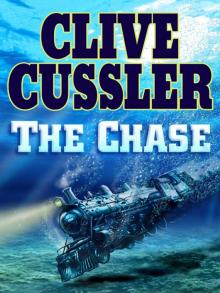 The Chase
The Chase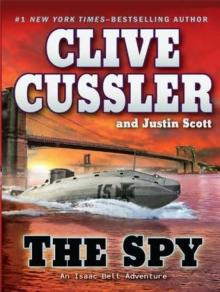 The Spy
The Spy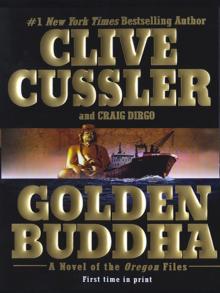 Golden Buddha
Golden Buddha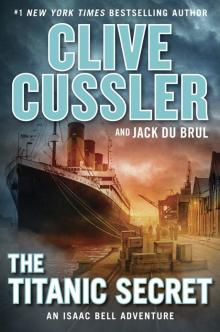 The Titanic Secret
The Titanic Secret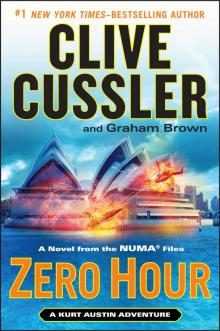 Zero Hour
Zero Hour Fire Ice
Fire Ice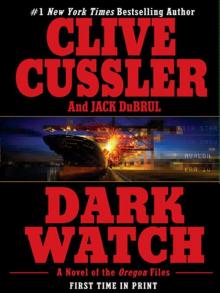 Dark Watch
Dark Watch The Storm
The Storm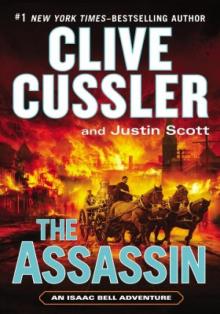 The Assassin
The Assassin Vixen 03
Vixen 03 Arctic Drift
Arctic Drift Night Probe!
Night Probe! Cyclops
Cyclops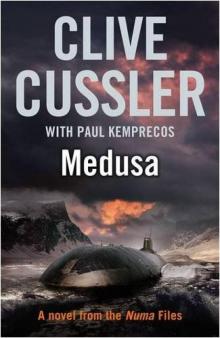 Medusa nf-8
Medusa nf-8 Shock Wave dp-13
Shock Wave dp-13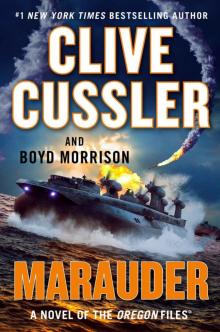 Marauder (The Oregon Files)
Marauder (The Oregon Files)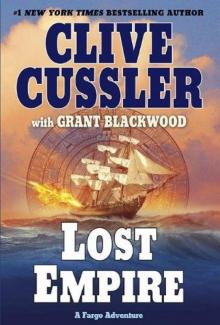 Lost Empire fa-2
Lost Empire fa-2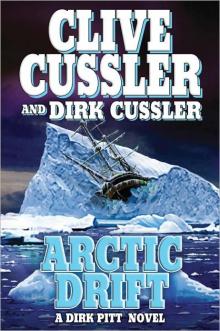 Arctic Drift dp-20
Arctic Drift dp-20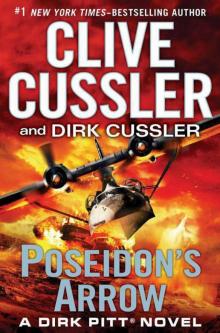 Dirk Pitt 22 - Poseidon's Arrow
Dirk Pitt 22 - Poseidon's Arrow Treasure of Khan dp-19
Treasure of Khan dp-19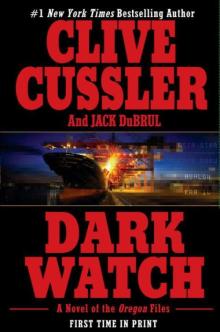 Dark Watch of-3
Dark Watch of-3 Devil's Gate
Devil's Gate The Sea Hunters II: More True Adventures with Famous Shipwrecks
The Sea Hunters II: More True Adventures with Famous Shipwrecks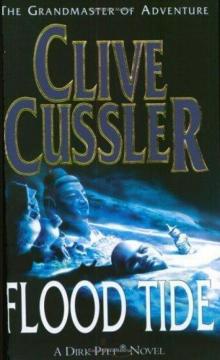 Flood Tide dp-14
Flood Tide dp-14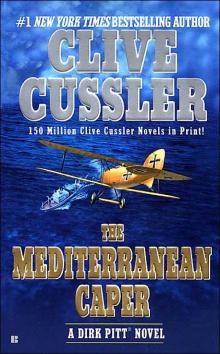 The Mediterranean Caper dp-2
The Mediterranean Caper dp-2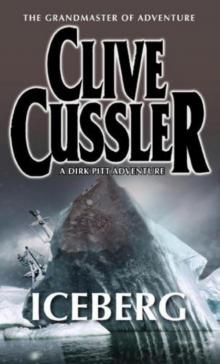 Iceberg dp-3
Iceberg dp-3 Sahara dpa-11
Sahara dpa-11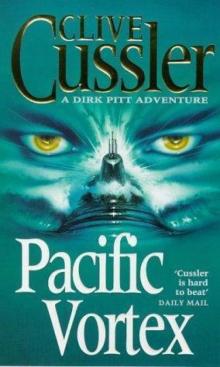 Pacific Vortex! dp-1
Pacific Vortex! dp-1 Deep Six dp-7
Deep Six dp-7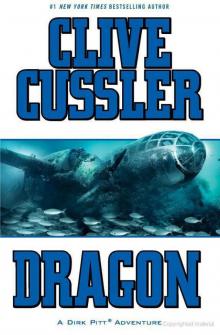 Dragon dp-10
Dragon dp-10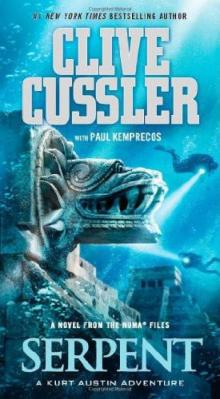 Serpent nf-1
Serpent nf-1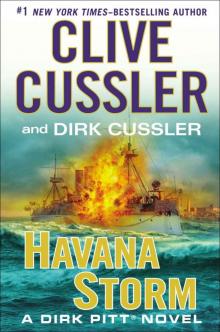 Havana Storm (Dirk Pitt Adventure)
Havana Storm (Dirk Pitt Adventure)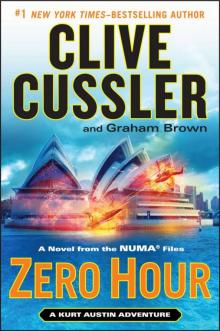 Zero Hour nf-11
Zero Hour nf-11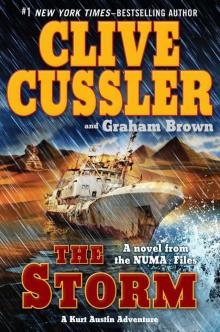 The Storm nf-10
The Storm nf-10 The Thief ib-5
The Thief ib-5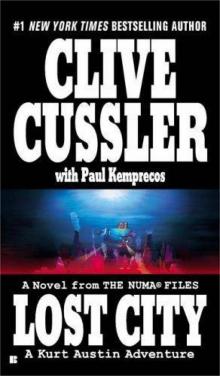 Lost City nf-5
Lost City nf-5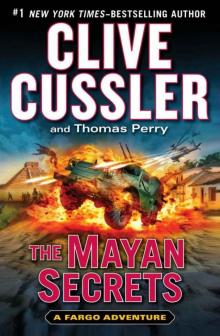 The Mayan Secrets fa-5
The Mayan Secrets fa-5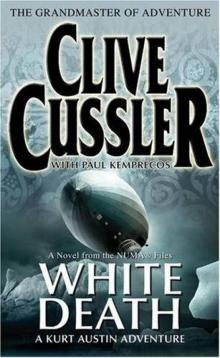 White Death nf-4
White Death nf-4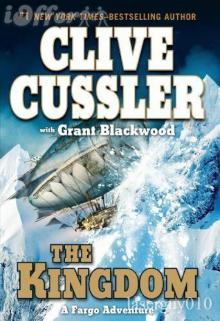 The Kingdom fa-3
The Kingdom fa-3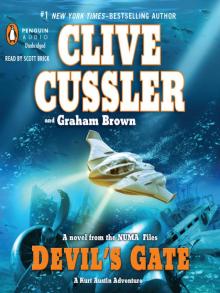 Devil's Gate nf-9
Devil's Gate nf-9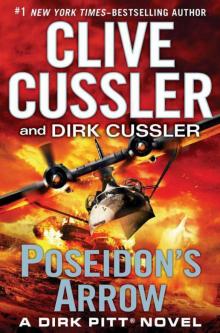 Poseidon's Arrow dp-22
Poseidon's Arrow dp-22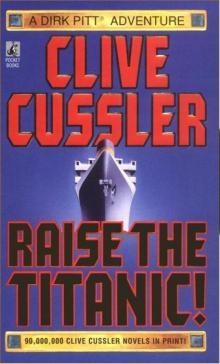 Raise the Titanic dp-4
Raise the Titanic dp-4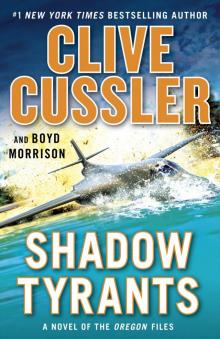 Shadow Tyrants--Clive Cussler
Shadow Tyrants--Clive Cussler Sacred Stone of-2
Sacred Stone of-2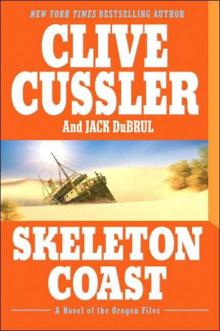 Skeleton Coast tof-4
Skeleton Coast tof-4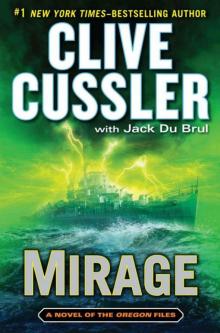 Mirage tof-9
Mirage tof-9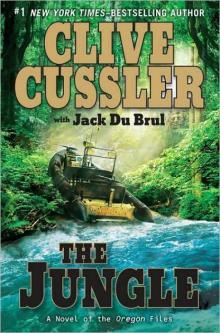 The Jungle of-8
The Jungle of-8 The Emperor's Revenge (The Oregon Files)
The Emperor's Revenge (The Oregon Files) Golden Buddha of-1
Golden Buddha of-1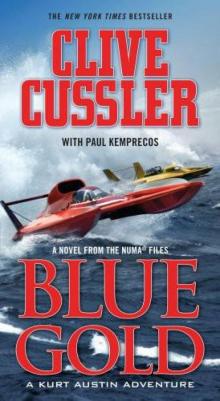 Blue & Gold
Blue & Gold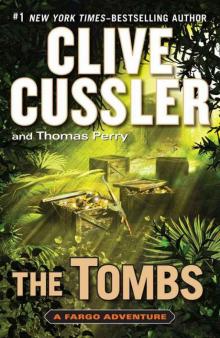 The Tombs fa-4
The Tombs fa-4 Inca Gold dp-12
Inca Gold dp-12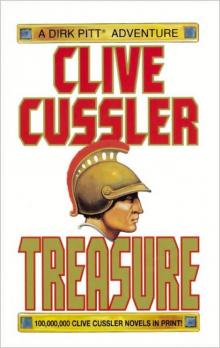 Treasure dp-9
Treasure dp-9 Atlantis Found dp-15
Atlantis Found dp-15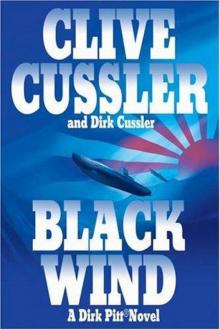 Black Wind dp-18
Black Wind dp-18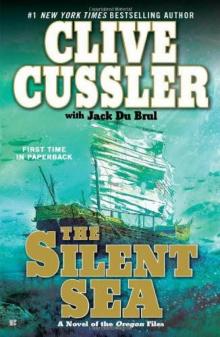 the Silent Sea (2010) tof-7
the Silent Sea (2010) tof-7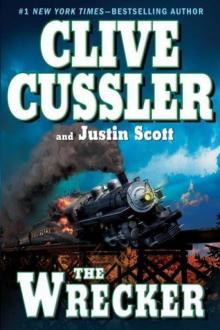 The Wrecker ib-2
The Wrecker ib-2 Fire Ice nf-3
Fire Ice nf-3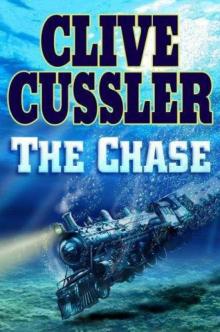 The Chase ib-1
The Chase ib-1 Sahara
Sahara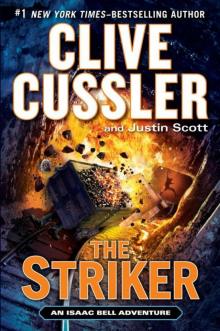 The Striker ib-6
The Striker ib-6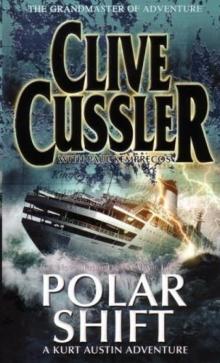 Polar Shift nf-6
Polar Shift nf-6 The Race ib-4
The Race ib-4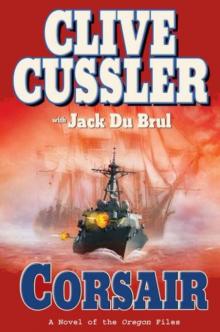 Corsair of-6
Corsair of-6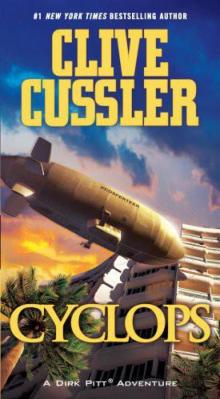 Cyclops dp-8
Cyclops dp-8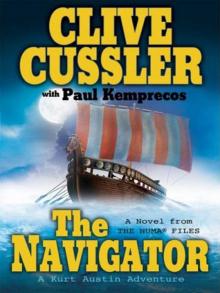 The Navigator nf-7
The Navigator nf-7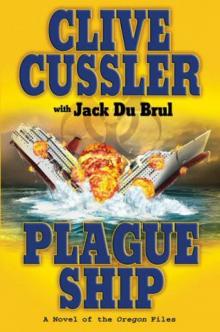 Plague Ship tof-5
Plague Ship tof-5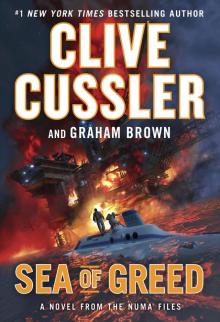 Sea of Greed
Sea of Greed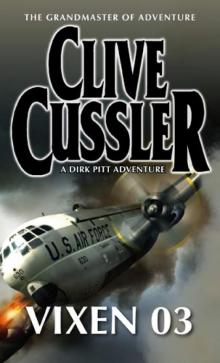 Vixen 03 dp-5
Vixen 03 dp-5 Thriller 2: Stories You Just Can't Put Down
Thriller 2: Stories You Just Can't Put Down